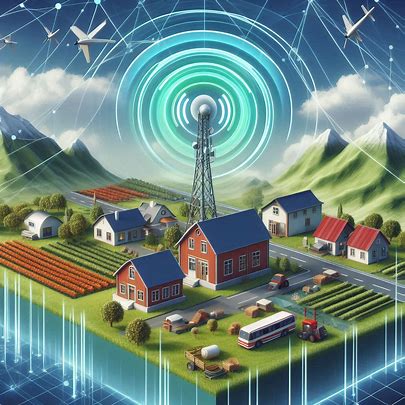
Why Long-Range Wi-Fi Repeaters Stand Out
Cost is a major factor in rural internet projects. Laying fiber optic cables can cost thousands of dollars per mile, and cell towers require ongoing maintenance. In contrast, Wi-Fi repeaters are affordable and easy to install. A single device can extend a signal up to several miles, depending on the model and terrain. This makes them ideal for small towns or farming communities. Moreover, repeaters can be powered by solar panels, reducing reliance on fossil fuels and further lowering costs.
Another advantage is flexibility. Repeaters don’t require extensive planning or permits, unlike new infrastructure projects. A community can set up a network in weeks, not years. For instance, a school with a stable internet connection can share its signal with nearby homes using a repeater. This creates a ripple effect, connecting entire neighborhoods without digging trenches or erecting poles. Isn’t that a game-changer for rural areas desperate for access?
Environmental Benefits of Wi-Fi Repeaters
Sustainability is a critical consideration in modern technology. Traditional internet infrastructure often disrupts ecosystems. Digging for fiber cables can damage soil and vegetation, while cell towers can harm wildlife, especially birds. Long-range Wi-Fi repeaters, however, have a much smaller footprint. They require minimal physical installation, often just a pole or rooftop mount. This preserves natural landscapes and reduces the need for resource-intensive construction.
Additionally, repeaters consume less energy than large-scale infrastructure. A single repeater uses a fraction of the power needed to operate a cell tower. When paired with renewable energy sources like solar or wind, they become even more eco-friendly. Imagine a rural community powered by clean energy, connected to the world through a network of green repeaters. It’s a vision that’s both practical and inspiring.
Challenges and Considerations
While long-range Wi-Fi repeaters are promising, they’re not without limitations. Signal quality can degrade over long distances or in areas with dense obstacles like forests or hills. Weather conditions, such as heavy rain, may also affect performance. To address these issues, communities must carefully select high-quality repeaters and plan their placement. Consulting with experts or using mapping tools can ensure optimal coverage.
Another challenge is the initial setup cost. Although repeaters are cheaper than fiber or towers, purchasing and installing multiple units can strain tight budgets. Fortunately, grants and government programs often support rural connectivity projects. Communities can also pool resources, sharing the cost of equipment to maximize impact. With the right strategy, these hurdles are far from insurmountable.
READ ALSO: IPTV and Environmental Sustainability: A Greener Way to Watch TV in the UK
A Path to a Connected, Sustainable Future
Long-range Wi-Fi repeaters are more than just a stopgap; they’re a bridge to a connected future. By providing affordable, sustainable internet access, they empower rural communities to thrive in a digital world. Students can access online learning, farmers can monitor markets, and small businesses can reach global customers. Best of all, this technology aligns with environmental goals, proving that progress doesn’t have to come at the planet’s expense.
As demand for connectivity grows, long-range Wi-Fi repeaters will play a vital role in closing the digital divide. They offer a practical, green alternative to traditional infrastructure, transforming lives without transforming landscapes. For rural communities, this isn’t just about getting online—it’s about building a brighter, more inclusive future. Why wait? The tools to connect are already here.
